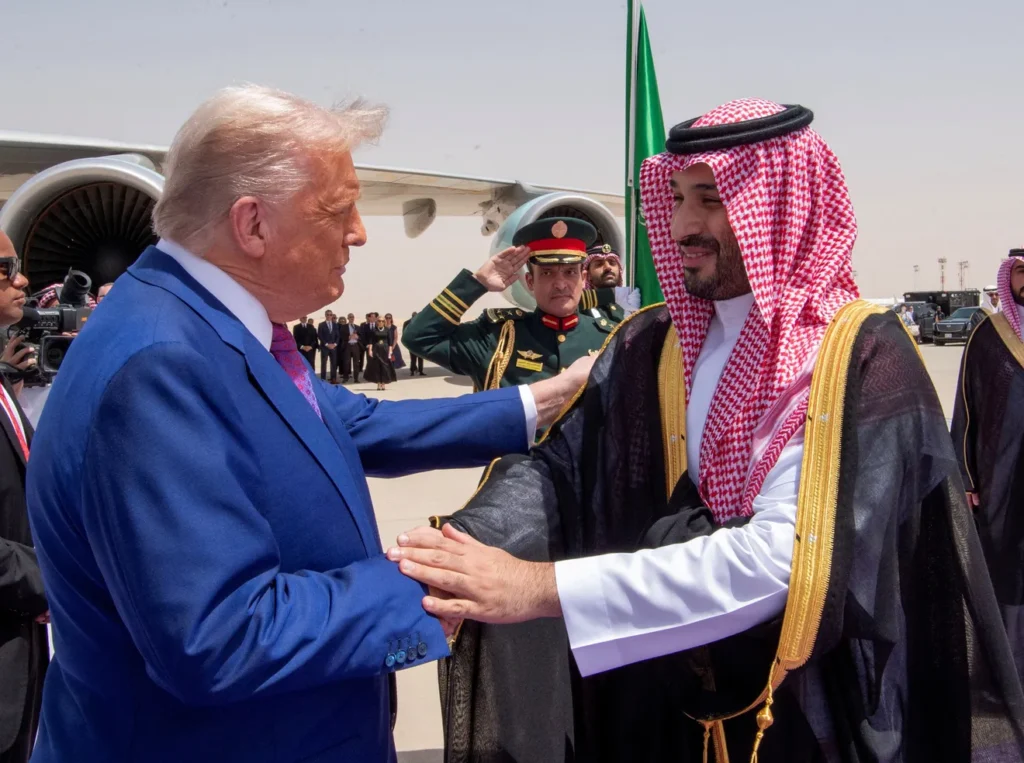
When former U.S. President Donald Trump stepped onto Middle Eastern soil during one of his most high-profile visits, few could have predicted the scale of the economic ripple that would follow. Amid the ceremonial greetings and diplomatic meetings, a groundbreaking announcement emerged — the Middle East, led by powerhouse nations like Saudi Arabia and the United Arab Emirates, unveiled a massive investment package aimed at the United States.
It was more than just dollars and deals. It was a signal — a signal that despite political rifts and cultural differences, the Middle East was ready to forge a new kind of partnership with America, one rooted in shared economic vision and mutual strategic interest.
The Heart of the Announcement
During the visit, it was revealed that Middle Eastern countries would commit hundreds of billions of dollars toward investments in the United States. These would span sectors such as infrastructure, energy, technology, and defense. Saudi Arabia alone pledged over $100 billion in various U.S.-based ventures, including a joint investment fund with American firms to stimulate economic development and job creation.
The message was clear: the Middle East wasn’t just seeking U.S. support — it was actively choosing to invest in America’s future.
Why Now?
For both sides, timing was everything.
From the U.S. perspective, the promise of foreign investment was a welcome boost. The Trump administration had campaigned heavily on the promise of bringing jobs back to America and revitalizing infrastructure. Attracting foreign capital to fund these ambitions fit that narrative perfectly.
From the Middle East’s viewpoint, the move was strategic and symbolic. For countries like Saudi Arabia, which had launched ambitious economic reform plans like Vision 2030 to reduce reliance on oil, closer economic ties with the U.S. represented an opportunity to diversify. Investment in U.S. technology, innovation, and real estate wasn’t just about profit — it was about learning, partnering, and progressing.
More Than Business: A Human Story
Beyond the contracts and headlines, there’s a human element often overlooked. The flow of capital from the Middle East to the United States isn’t just about large figures moving across screens. It means real change for real people.
For example, when Saudi investment helped fund new infrastructure projects in rural and urban parts of the U.S., it translated into tangible things: new roads, energy plants, and manufacturing facilities. These, in turn, created jobs — often in towns that had seen years of decline and disinvestment.
Imagine a former auto worker in Michigan, out of a job for years, now getting hired to build a state-of-the-art electric vehicle plant funded in part by a Saudi investment firm. Or a tech graduate in Ohio finding employment at a cybersecurity startup that just received backing from an Emirati sovereign wealth fund. These are not just economic statistics — they are life stories, rejuvenated through cross-border collaboration.
Geopolitics and Trust
Still, not everyone welcomed the news with open arms. Critics questioned the motives behind the investments. Were they purely economic, or were they designed to gain influence in Washington? Skepticism also arose about human rights records and the political stances of some Middle Eastern governments.
Yet, diplomacy is often built on pragmatism. For decades, the U.S. has maintained strong military and strategic ties with Middle Eastern allies. These investments reflect an evolution in that relationship — one where economic interdependence becomes a central pillar of diplomacy.
And to be fair, trust goes both ways. Middle Eastern nations are placing their money and their faith in the stability and promise of the American economy, even at times when domestic politics in the U.S. are polarized. That’s no small gesture.
A Glimpse into the Future
This investment wave could mark the beginning of a long-term shift in global economic dynamics. No longer are Middle Eastern nations content being energy exporters alone. They want to be investors, innovators, and global economic players.
For the United States, it’s an opportunity to attract capital, boost development, and reinforce its role as a central hub for innovation. But it’s also a reminder that in today’s interconnected world, economic growth isn’t just national — it’s global. Prosperity can cross borders, and when done right, it benefits everyone involved.
Final Thoughts
Donald Trump’s visit to the Middle East may be remembered for many things — speeches, symbolism, diplomacy. But perhaps its most lasting legacy will be the doorway it opened to deeper economic cooperation.
At its core, this story isn’t just about two regions striking deals. It’s about people: workers, families, entrepreneurs, and communities that stand to gain when nations look beyond politics and invest in each other’s futures.
In a time when division often dominates headlines, this kind of cooperation serves as a hopeful reminder: that nations, no matter how different, can find common ground — and sometimes, that ground is built on shared prosperity.